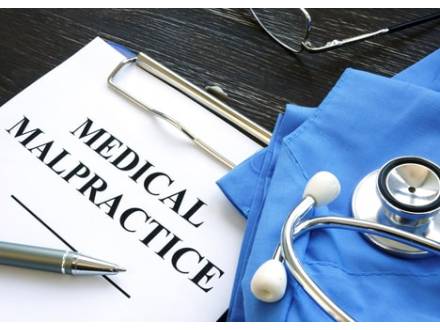What Evidence is Required in a Medical Malpractice Claim?
 Maryland has more active physicians per capita than almost any other state, ranking second out of the 50 states with 377.8 active physicians per 100,000 people. Despite the number of active physicians, the number of medical malpractice filings in the state is relatively low—usually between 600 and 650 cases per year.
Maryland has more active physicians per capita than almost any other state, ranking second out of the 50 states with 377.8 active physicians per 100,000 people. Despite the number of active physicians, the number of medical malpractice filings in the state is relatively low—usually between 600 and 650 cases per year.
A medical malpractice claim is filed when a healthcare professional acts in a way that another similarly trained professional would not have done, given the same circumstances. While it may sound fairly straightforward, medical malpractice claims can be complicated, requiring a highly experienced medical malpractice attorney and solid evidence.
Gathering the proper evidence to support a medical malpractice claim can be daunting, requiring a knowledgeable Hagerstown, MD medical malpractice attorney to guide you through the process. Below, you will find a list of the types of evidence required for a successful medical malpractice claim.
Seven Types of Evidence Needed for a Medical Malpractice Claim
When crucial evidence is missing or incomplete, a medical negligence claim may not be successful. Comprehensive evidence and paperwork can also determine the amount of compensation a medical malpractice lawsuit is awarded. The types of evidence you need for your claim include:
Medical Records
Comprehensive medical records are crucial to a medical malpractice claim. These records should include detailed information about your medical treatment, including procedures, prescribed medications, and diagnoses, along with notes from healthcare providers. Medical records include bloodwork, X-rays, and imaging tests like MRIs, CT scans, and PET scans.
Medical records also include consent forms where a person gives permission for a specific treatment or procedure and can be used to show that the risks and potential complications were not properly disclosed. Any correspondence with medical professionals should also be part of the medical records.
Medical Bills and Receipts
It is important to keep all bills and receipts associated with treatments to show evidence of the financial impact of the alleged medical malpractice. Doctor visits, hospital stays, surgeries, medications, anesthesia, rehabilitative therapies, and medical equipment necessary for recovery, as well as transportation expenses and other out-of-pocket costs, should all be included.
Insurance Documentation
An individual’s health insurance policy, Explanation of Benefits, and all correspondence with the insurance company, along with statements that show how much the insurance paid and how much the individual is responsible for paying. The monthly statements of premiums paid should also be included.
Witness Statements
If witnesses were present during a prescribed treatment, medical test, or surgery, the names and contact information of those witnesses should be included whenever possible. Witnesses who see how medical malpractice and the resulting injuries have changed the individual’s quality of life should also be included in witness statements.
Expert Opinions from Other Doctors
Medical professionals who have treated an individual in the past or are currently treating him or her can offer opinions regarding the individual’s prognosis, treatment, or care. When another medical professional testifies that the treatment was inappropriate or insufficient, it can go a long way toward convincing a jury.
Tax Returns and Employment Records
Economic losses must be clearly presented when medical malpractice has resulted in the loss of wages and benefits. Lost wages and lost future wages can be a significant part of medical malpractice damages. Future lost wages are calculated based on age, work-life expectancy, skills, education, and the severity of the injuries.
Text Messages, Videos, and Photographs
Documentation of an individual’s physical condition through videos and photographs can be especially powerful. Videos can illustrate the severity of the person’s condition, mobility issues, and other physical hardships caused by medical malpractice. Text messages may document complaints and physician responses that are not entirely shown through medical records. Photographs of physical injuries and surgical wounds can substantiate a medical malpractice claim.
Contact a Washington County, MD Medical Malpractice Lawyer
When you have a Hagerstown, MD medical malpractice attorney from Serafini Law who can present strong evidence to support your medical malpractice claim, you are more likely to receive an equitable settlement. We answer calls 24/7 and are supportive of clients while being aggressive with insurance companies. Attorney Serafini grew up in Hagerstown, has more than 12 years of experience, and gives each case highly personalized attention. Call 240-744-1600 to schedule your free consultation.





